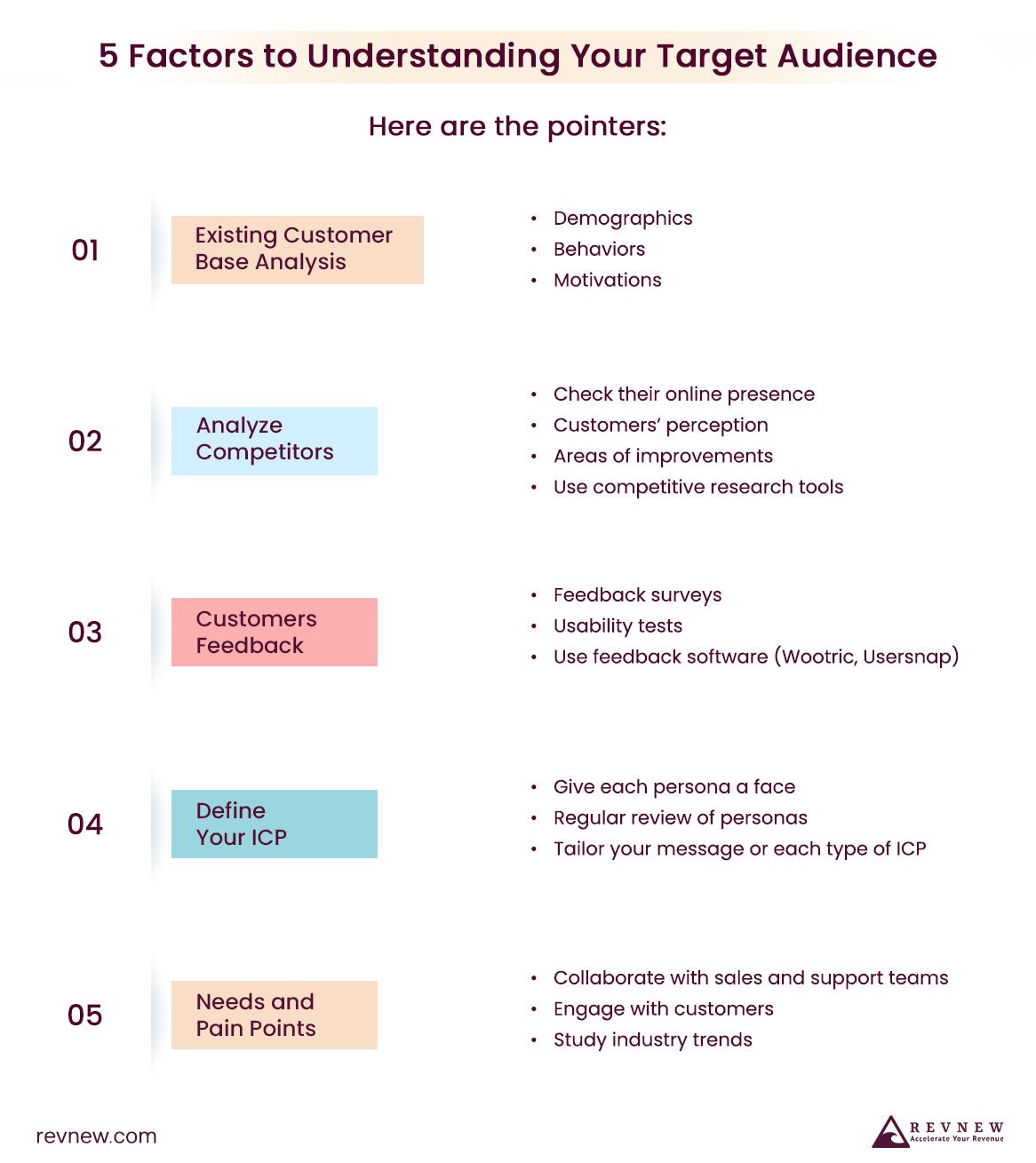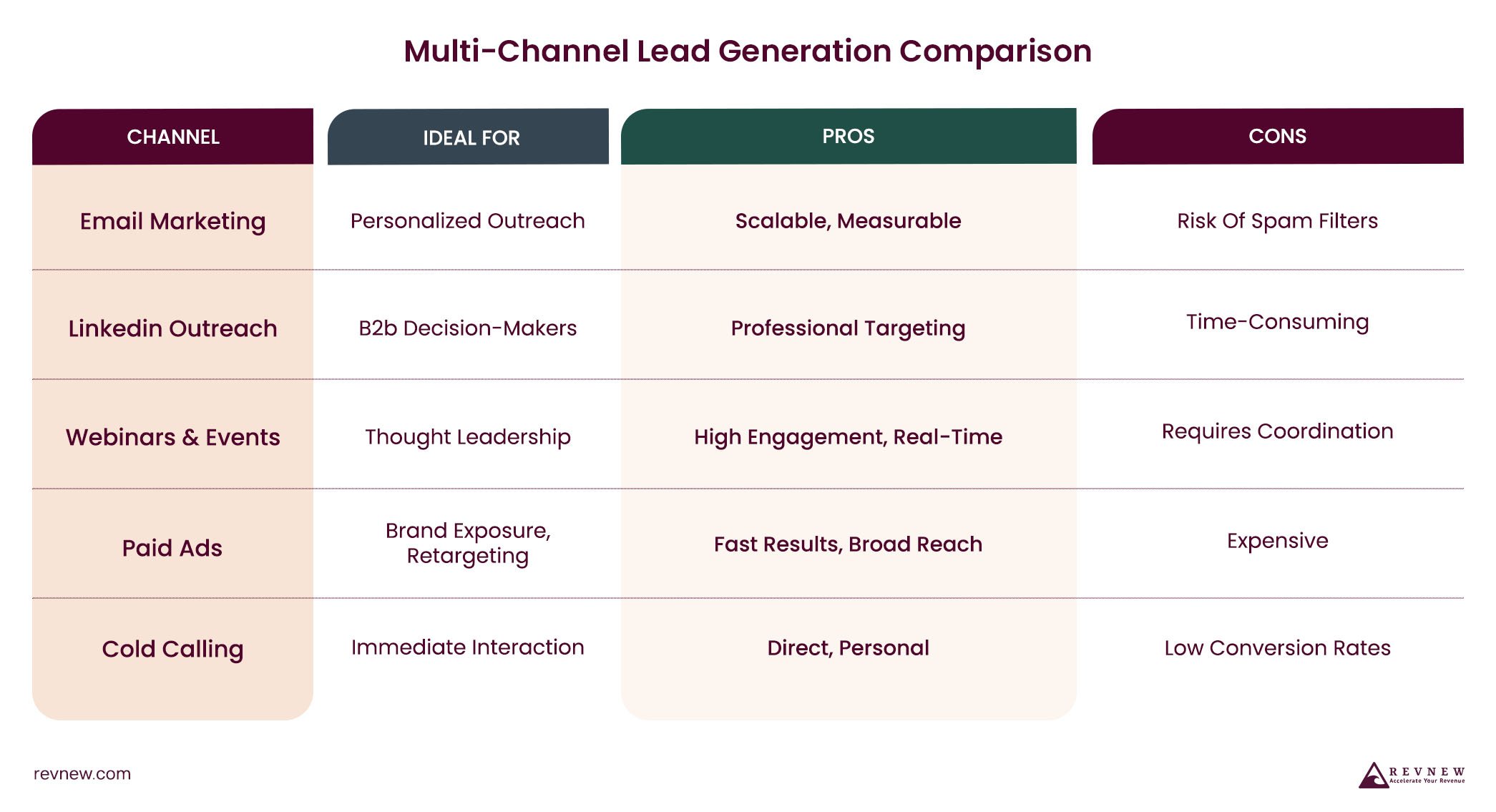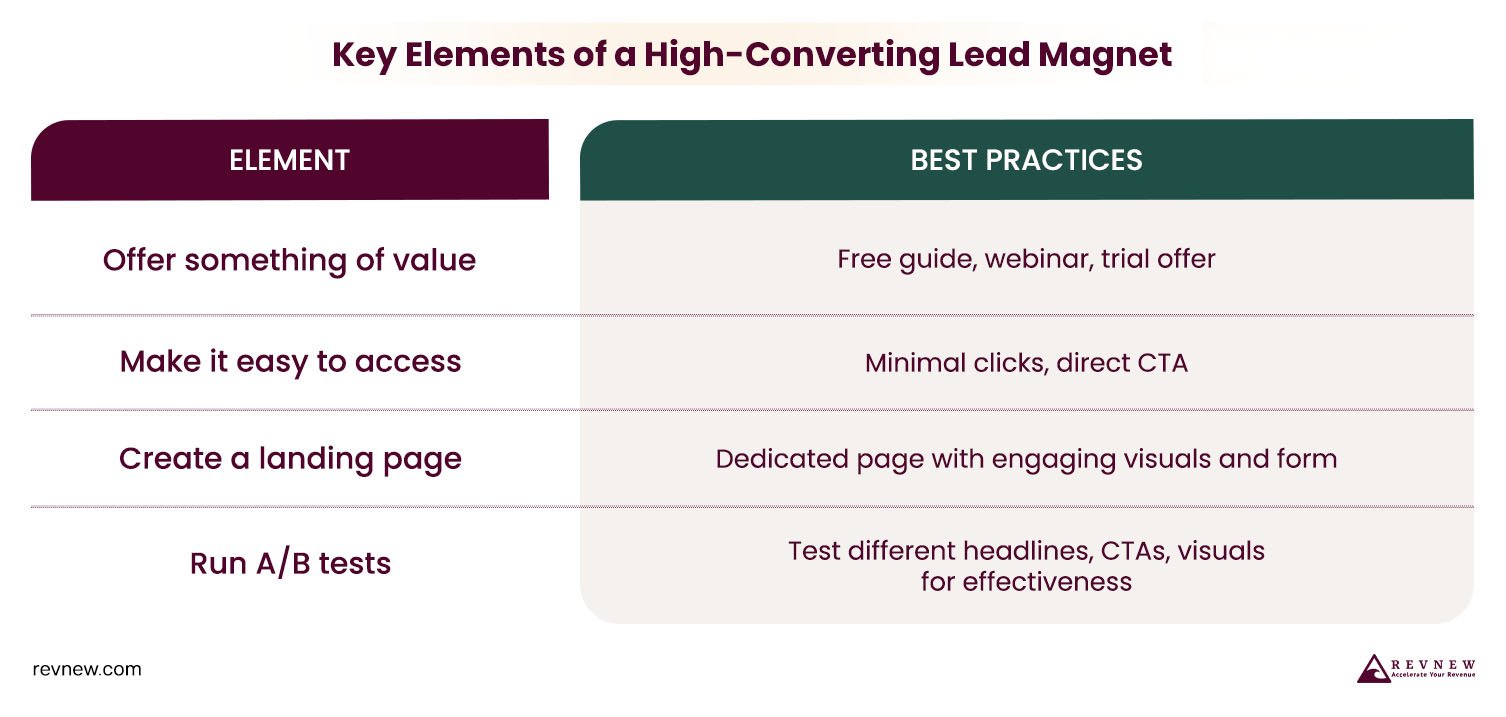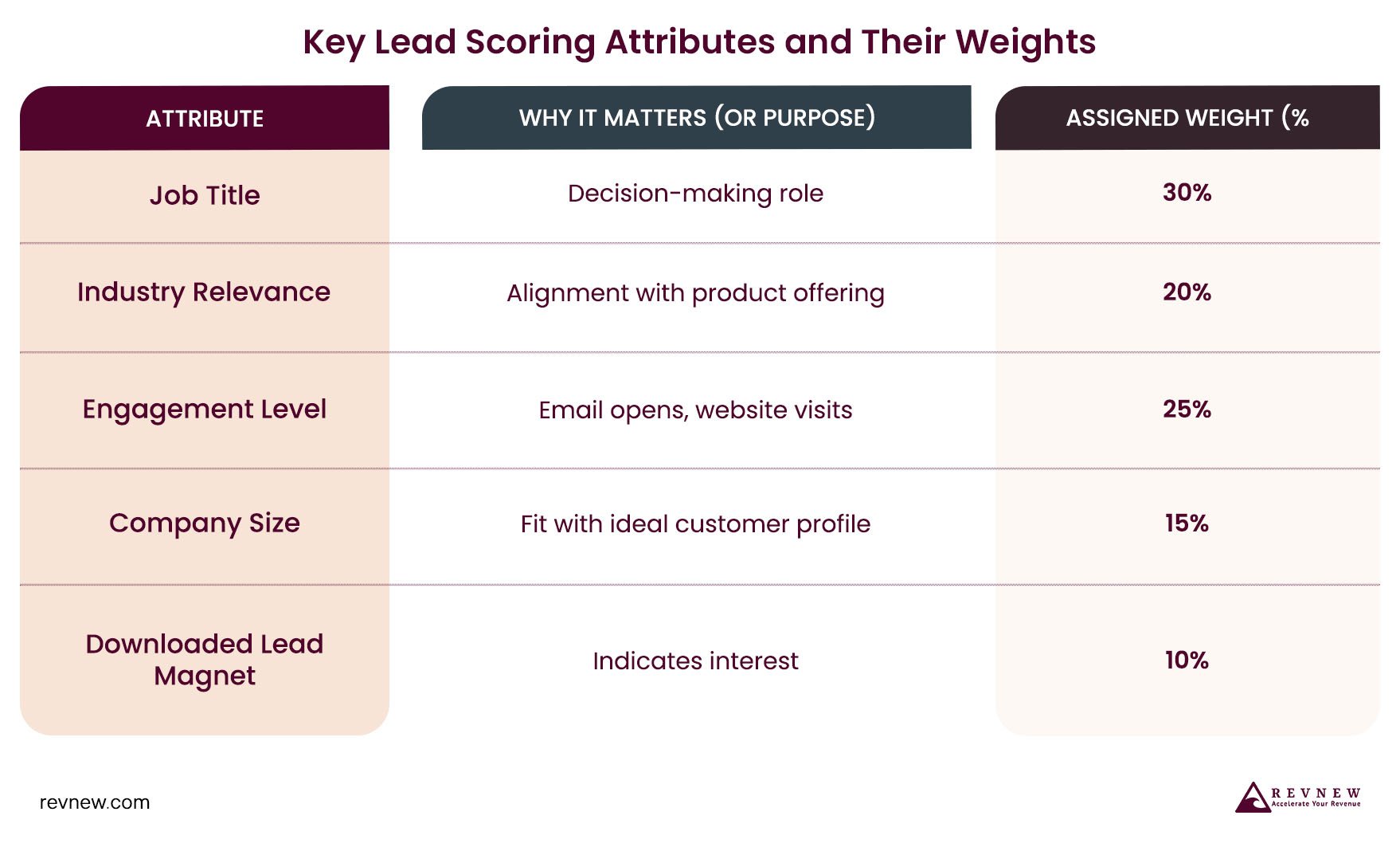
7 Effective Ways To Generate Leads That SDRs Must Know
As the name suggests, lead generation is finding potential customers and making them your paying customers. But, is attracting and capturing prospects' interest and nurturing the relationship until they are ready to purchase easy? Not at all!
As a sales development representative (SDR), you already know how challenging it can be to find new customers and meet sales targets. Many businesses also rely on outsourced SDR companies to streamline their outreach. Hence, all you need is a lead generation strategy in place.
So, let us explore some of the best tips to build a well-defined lead generation strategy.
Lead Generation And Prospecting Tips for SDRs
1. Understanding Your Target Audience

-
Analyze Your Current Customer Base:
Study your existing B2B customers in the following areas:
- Demographics: Gender, ethnicity, income, Industry, Job Title, etc.
- Behaviors: Habitual, complex, impulsive, variety-seeking, limited decision-making, etc.
- Motivations: Fear of Missing Out when a product or service fits their needs, luxury, self-improvement, competency, etc.
It will help identify common traits of your target customers.
-
Research Your Competition:
Study your competitors' customer base to understand who they are targeting and what they offer. Start with Identifying your main competitors and analyzing their online presence. Additionally, learn the perception of your target consumer base about them. It will help you identify areas that require attention and improvement.
Furthermore, use competitive research tools such as Spyfu, SEMrush, etc., to get better insights. -
Get Honest Feedback:
Ask your existing consumers to share their input on what's good and what's missing in your product or service. Conduct customer feedback surveys, usability tests, etc. However, you can also get instant customer feedback through your website. You’ll have to use an embeddable on-site feedback widget such as Wootric, Usersnap, etc. -
Use Customer Personas:
Develop customer personas, fictional characters representing your ideal customer, to help you better understand and target them. Here are a few tips:
- Give each persona a face and a story to help bring them to life. It’ll make it easier to remember and empathize with them.
- Regularly review and update your personas based on new data and insights. It ensures that data remain accurate and relevant.
- Use your personas in your marketing and sales efforts to target the right people with the right messages.
-
Understanding Their Needs And Pain Points
Besides customer surveys, here are the three new and effective methods you can use:
- Collaborate with sales and support teams: Keep in sync with your sales and support teams. It'll help you understand your potential customers' challenges and how your product/service can address them.
- Engage with customers: Stay consistently in touch with your customers via appropriate channels. These may include email, phone calls, or virtual meets through webinars. Doing so will help build relationships and gather insights into their needs and pain points.
- Study industry trends: Stay up-to-date on your industry's latest trends and advancements to understand how they affect customer needs and expectations.
2. Developing A Lead Generation Strategy
-
Setting Clear Goals And Objectives For Your Sales/Marketing Effort:
Establish a clear timeline for reaching your prospects and allocate the budget to support your efforts. It helps you in the following manner:
- Stay focused and prioritize your activities.
- Ensures you are making the most of your resources.
- You make progress toward your objectives.
- It eases the process of measuring the success of your lead generation efforts.
- Make data-driven decisions about how to adjust and improve your approach.
-
Evaluating The Market And Identifying Opportunities
To generate leads in sales, you need to understand the opportunities and challenges in your niche market. Many businesses also explore partnerships with outsourced SDR companies to gain a competitive edge and scale outreach. You must go beyond what your competitors typically do to evaluate and identify opportunities. You can focus on these points:
- Identify unmet needs and opportunities regarding your target audience.
- Be aware of all the latest trends and advancements in your niche industry.
- Identify underserved niche markets and explore opportunities to fill those needs.
- Track any changes in customer demographic. It will help you access new sales opportunities.
- Actively collaborate with partners, suppliers, and industry experts to gather market insights.
- Test and validate opportunities through customer feedback and market data to ensure they are viable and worth pursuing.
-
Choosing The Right Lead Generation Channels

Here are a few best practices you must consider while choosing the appropriate channel(s) for lead generation.
- Begin with determining where your target audience is most active and what channels they use to gather information and make purchasing decisions.
- Consider your available resources, such as budget, staffing, and technology, when choosing your lead generation channels.
- Choose lead generation channels that align with your goals and objectives and are most likely to generate high-quality leads.
- Research the different channels available, including email marketing and events, to determine which are best suited to your needs. Test a few of them and measure their effectiveness, then refine and optimize your approach as needed based on the results.
- Don't rely on a single channel for lead generation. Instead, consider a multi-channel approach that combines inbound and outbound marketing strategies.
3. Building Your Lead Generation Toolkit
-
Creating A Website Optimized For Lead Generation
Build a website that perfectly caters to your target prospects. Below are a few focus areas of your website that are a must for lead generation:
- A clear value proposition highlights the unique value your product or service offers. Emphasize why your target audience should choose you over your competitor.
- A straightforward and action-orientated call-to-action, such as "Contact us" or "Sign up now" on appropriate places across your website.
- A form that’s easy to find and fill enables prospects to provide their contact details without asking for too much information.
- A mobile-friendly website as more people access the internet from their mobile devices.
- Testimonials, reviews, and case studies to build trust and credibility with your target audience.
-
Developing Content To Attract Leads
- Offer valuable and relevant information: You must create content that provides value to your target audience. It can include insights, tips, and solutions to their problems and ensure your content is relevant to their needs.
- Make the content shareable: Embed social media sharing options on your website pages. It will encourage leads to share your content with their network.
- Use compelling headlines and images: Studies state that 80% of readers never read the copy if the headline isn’t compelling. In fact, headlines and images are the first things people see when they land on your website. Therefore, make sure that they are attention-grabbing and relevant to the content that follows.
- Repurpose your existing content: Re-use all your valuable content by sharing them through different formats. It will help your content to reach a broader audience. Some of the best formats include thought leadership articles, infographics, videos, and webinars.
-
Setting Up Lead Magnets And Landing Pages
Ensure to create a lead magnet that resonates with your targeted prospects. 
Here are a few ways to do it:
- Offer something of value: Your lead magnet should offer value to your target audience, such as a free guide, a webinar, or a trial offer.
- Make it easy to access: Make sure your lead magnet is easy to access with an action-oriented call-to-action, such as a "Download now" button.
- Create a dedicated landing page: Embed your lead magnet to the landing page where visitors can access it. Additionally, Optimize your landing page for lead generation by including engaging headlines and subheadlines, relevant visuals, and an accessible lead form for visitors to provide their contact information.
Try different headlines, images, and calls to action to see what resonates with your target audience and drives the most leads.
4. Implementing Lead Generation Tactics
-
Using Email Marketing And Lead Nurturing
Using email marketing and lead nurturing together, you can create a personalized and effective marketing experience for your prospects and customers.
For example, you can introduce your lead magnet through cold emailing. Ensure to offer something of value to your subscribers and targeted prospects. Then, use lead nurturing to educate and engage them with relevant content and offers until they are ready to purchase your product.
Combining these two strategies can effectively move your leads down the sales funnel and increase conversions.
-
Hosting Webinars And Events
It is one of the popular lead generation and prospecting tips. In fact, you can establish yourself as a thought leader in your industry by hosting webinars and events. It helps to build relationships with your target audience and drive lead generation for your business. Here are a few best practices to ensure effectiveness:
- Plan and prepare: Plan your webinar or event well in advance, considering all the necessary logistics, such as venue, equipment, and attendees.
- Create buzz for your event or webinar: Use appropriate marketing channels to reach the right audience that'll like to join your webinar or event. Some of the main channels are email marketing, paid advertising, and social media.
- Use engaging content: Ensure your webinar or event content is engaging, informative, and relevant to your target audience. Thus, using custom visual aids, such as videos, slides, and images, can make your webinar session interesting. In fact, 78% of CMOs agree that custom content will be the future of marketing.
- Encourage interaction: Let the attendees ask queries, engage in discussions, offer feedback, and share their thoughts on the ongoing webinar or event. However, ensure to have this interaction session after your presentation ends. This practice will eventually make them initiate the business conversation with you.
- Follow up with attendees: Don't forget to thank attendees for their time and participation. Furthermore, you must provide bonus information or resources they may appreciate.
-
Partnering With Complementary Businesses
Before you partner with a complementary business, ensure to file legal agreement papers. Check out the below image to know what clauses you must include in the agreement:
Complementary businesses offer products or services that don't compete with you directly. Instead, they complement your products/services. Plus, you'll get access to their network once you partner with these businesses.
Thus, you can explore a new consumer base that may want to invest in your products or services. This practice will help you to achieve three important things:
- A strong relationship with a wider audience
- Credibility in your niche industry
- An authority position in front of your prospects
However, choosing partners carefully and establishing clear partnership goals and expectations beforehand is important.
5. Asking For Referrals From Existing Customers
Referral Marketing is reported to generate 3-5 times higher conversion rates compared to any other channel.
Thus, you must be strategic while asking your existing customers for referrals. Here's how to do it:
-
Preparing Customers To Join Referral Programs
- Always provide your customers with exceptional service. It ensures they remain happy and satisfied with your partnership. It will increase the likelihood that they will refer others to you.
- Aid your nurturing strategy by incentivizing customers who refer new business to you. You can provide discounts, rewards, or bonuses.
- Next, provide customers with referral materials to make it easier for them to refer others. It may include a referral link, business cards, or brochures.
- Directly ask customers for referrals where they need to introduce your products/services to your possible prospects. Additionally, guide them on how they can make the referral.
-
Participating In Industry Events
Participating in industry events can be highly beneficial for SDRs. These events provide a platform to network with other professionals and stay updated with the latest trends and technologies. Moreover, you get to learn from industry experts. Attending such events can help you gain exposure to potential customers, partners, and investors and build valuable relationships.
Additionally, industry events let you showcase your products/services to a broader audience. It ultimately helps to increase brand recognition and drive sales. Furthermore, such events provide a valuable opportunity to gain customer insights and feedback.
Thus, you can use them to drive innovation and improve your offerings. Participating in industry events is a smart investment for businesses looking to grow and succeed.
6. Qualifying Leads and Prioritizing Prospects
-
Defining Your Lead Scoring Criteria

When you define your lead scoring, you assign a numerical value or score to a lead. The score is based on the lead’s likelihood of becoming a customer. Furthermore, defining your lead scoring helps determine which leads are the best fit for your business and should be prioritized. Here are some key steps to help you define your lead-scoring criteria:
- Determine lead scoring attributes: Based on your understanding of your target customer, identify the most important attributes in determining which leads may become a customer. These could include job title, company size, industry, and level of engagement with your company.
- Assign weights to attributes: Once you identify your lead scoring attributes, assign a numerical value or weight to each one to indicate its relative importance.
For example, if your targets are decision-makers with a specific job role in your target industry. Then, you might assign more weight to the job title than the company size.
- Determine score ranges: Based on the weights you assign, determine score ranges that indicate different levels of lead quality. Here is a basic sample of determining score ranges:
- High-quality leads: 80-100
- Medium-quality leads: 60-80
- Low-quality leads: 0-60
- Regularly review and adjust: Lead scoring criteria can evolve as you learn more about your customers and their behaviors. Periodically review and revise your criteria as needed to ensure that it accurately reflects the qualities of your best leads.
-
Handing Over Qualified Leads To The Sales Team
Before handing qualified leads to the sales team, segment leads based on their needs, pain points, and lead score. Then, follow the below-given steps to assign qualified leads to the sales team smoothly:
- Agree on a clear qualified lead definition: It's important to define what a "qualified lead" means for your business. Collaborate with your sales team to come up with a qualified lead criteria and ensure everyone agrees to the chosen criteria.
- Establish clear communication channels: Establish clear and regular communication channels between the sales and marketing teams. It ensures that leads are handed over smoothly and efficiently.
It could include regular meetings or email updates. Using reliable project management tools like Trello, ClickUp, etc. would be helpful. - Provide relevant information: When handing over leads to the sales team, provide relevant information about each lead. It includes their contact information, demographics, and other relevant information collected through the lead-generation efforts.
- Monitor lead follow-up: After handing over leads to the sales team, monitoring their follow-up efforts is important to ensure that leads are being attended to promptly. Regular check-ins with the sales team help keep everyone on track and ensure leads effectively convert into customers. Further, focus on nurturing converted leads with personalized content and offers.
7. Measuring and Improving Lead Generation Results
- Define what you want to track: Begin by determining your lead generation objectives. Then, outline the desired outcomes and the key performance indicators (KPIs) you intend to monitor.
- Choose the right tools: Many tools are available to help you track your lead generation results and nurturing efforts. These tools include an email address finder, email marketing, a landing page builder, LinkedIn, a CRM system, and referral marketing software.
Below are examples of life-saving tools:
Email Address Finders - Emailsearch.io, Skrapp.io.
Email Marketing - Closely/MailShake
Landing Page Builders - Moosend, Unbounce
CRM Systems - Hubspot/Salesforce
Referral Marketing Software - Birdeye Referrals, Trakaff
LinkedIn - Sales Navigator, LinkedProspect - Implement tracking codes: To accurately track your lead generation results, it's important to implement tracking codes on your website, landing pages, and other marketing assets. It will help you track key metrics such as website traffic, pageviews, form submissions, conversion rates, etc. Some of the best tools that let you add tracking codes are Google Analytics, Adobe Analytics, and Matomo.
- Establish a reporting structure: Establish a clear reporting structure for tracking your lead generation results. It could include regular reports on key metrics, such as website traffic, lead volume, conversion rates, and a more detailed analysis of your lead generation campaigns.
- Regularly review and adjust: Analyze the obtained data to identify the strengths and weaknesses of your efforts. Regularly review and adjust your tracking system to ensure you accurately track your lead generation results and get the data you need to make informed decisions.
Conclusion
The key takeaway suggests that SDRs must focus on identifying their target audience and their pain points. Then, only they can present their offerings as the best choice for their potential customers. As a sales development representative, strategically generating sales leads helps you prioritize your time and efforts and focus on the most promising prospects. It ultimately closes more deals.
Effective lead-generation strategies help maximize productivity, improve conversion rates, and increase overall sales performance. Partnering with outsourced SDR companies is another strategic option for businesses looking to ramp up lead flow without expanding internal teams.
However, if you want to double your sales without worrying about finding qualified leads, check out our outbound marketing service at Revnew. Our service experts take care of and optimize your lead-generation practices. Contact us today.

.jpg?width=60&name=deepti%20(2).jpg)


